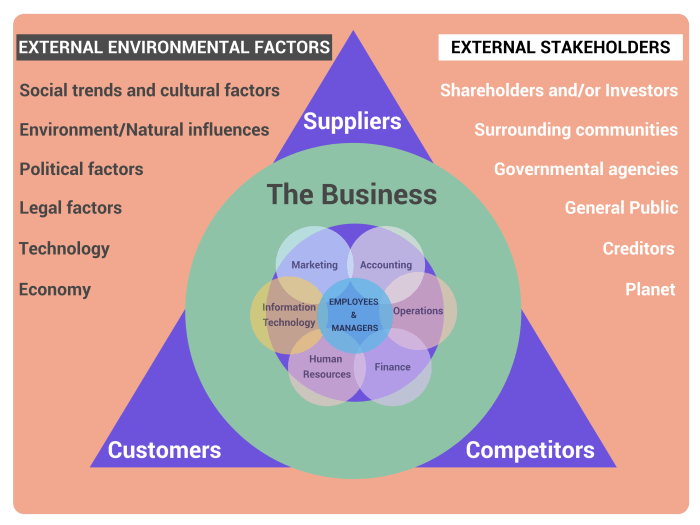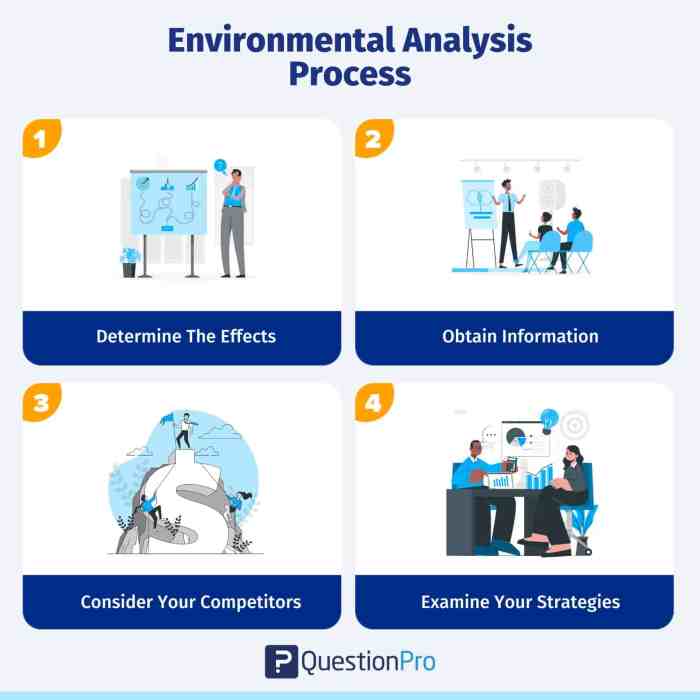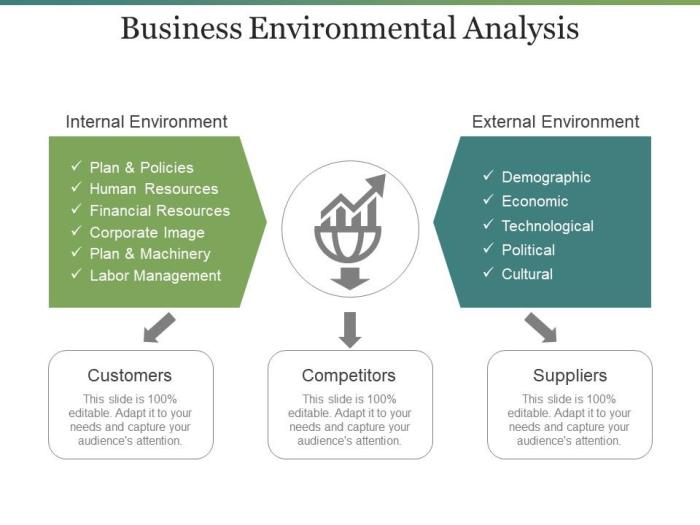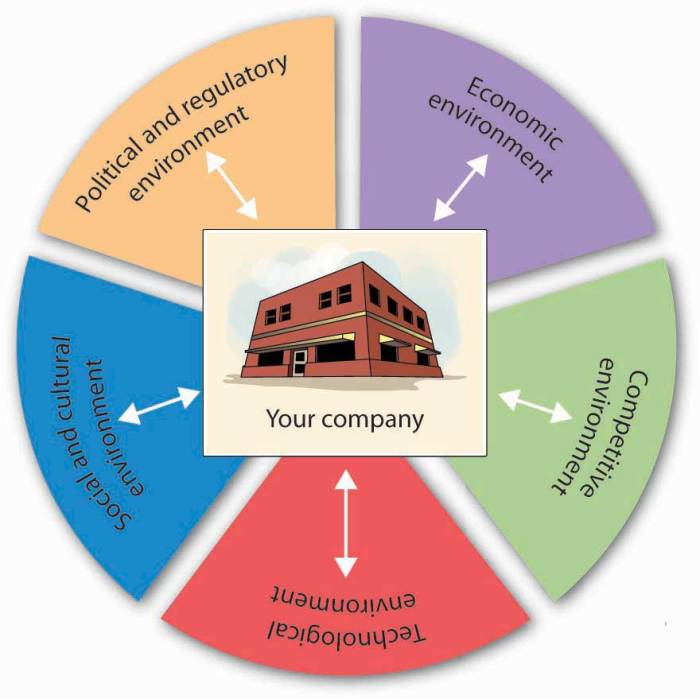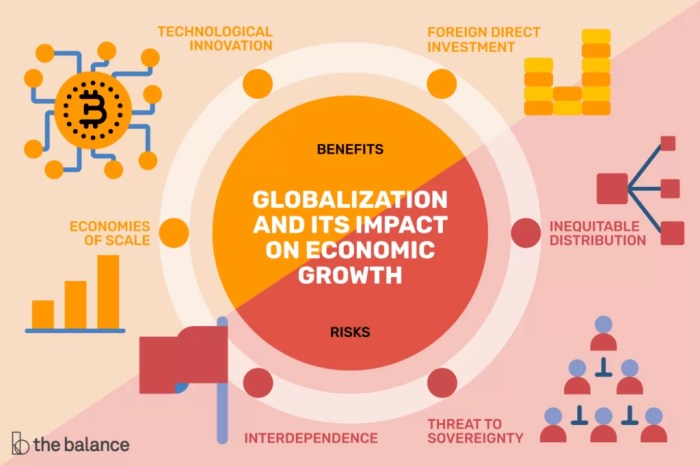
Step into the world of Business Environment Sustainability Practices where companies are embracing eco-friendly strategies to secure a sustainable future. Get ready for an enlightening journey filled with insights and innovation!
BUSINESS ENVIRONMENT
The business environment refers to the external factors that affect the operations and success of an organization. It includes all the conditions, circumstances, and influences that surround and affect a business.
Components of the Business Environment
- The Economic Environment: This includes factors such as economic growth, inflation rates, exchange rates, and interest rates that can impact the financial health of a business.
- The Technological Environment: This encompasses advancements in technology that can create opportunities or threats for businesses, such as automation, artificial intelligence, and digital transformation.
- The Political and Legal Environment: This involves government policies, regulations, and laws that can affect how a business operates, including taxation, trade policies, and environmental regulations.
- The Social Environment: This includes demographics, cultural trends, and social values that can influence consumer behavior and market demand.
- The Competitive Environment: This consists of competitors, industry rivals, and market dynamics that can impact a company’s market share and profitability.
Impact of the Business Environment on Organizations
The business environment can have a significant impact on organizations in various ways. It can create opportunities for growth, innovation, and market expansion, but it can also pose threats and challenges that companies need to navigate to remain competitive and sustainable.
External Factors Influencing the Business Environment
- Market Trends: Changes in consumer preferences, industry trends, and market dynamics can influence how businesses operate and make strategic decisions.
- Technological Disruptions: Rapid advancements in technology can disrupt industries, create new business models, and force organizations to adapt to stay relevant.
- Economic Conditions: Fluctuations in the economy, such as recessions, inflation, or currency devaluations, can impact consumer spending, investment decisions, and overall business performance.
- Regulatory Changes: Updates in regulations, laws, and government policies can require businesses to comply with new standards, which may affect their operations and profitability.
BUSINESS ENVIRONMENT SUSTAINABILITY PRACTICES

In today’s business landscape, sustainability practices have become increasingly important for organizations across various industries. Sustainability practices in the business environment refer to the initiatives and strategies adopted by companies to minimize their environmental impact, promote social responsibility, and ensure long-term economic viability.Integrating sustainability practices into business operations is crucial for several reasons. Firstly, it helps companies reduce their carbon footprint and minimize waste, leading to cost savings and operational efficiency.
Secondly, it enhances the company’s reputation and brand image, attracting environmentally conscious consumers and investors. Lastly, sustainability practices contribute to overall environmental protection and conservation efforts, aligning businesses with global sustainability goals.
Importance of Sustainability Integration
Implementing sustainability practices within organizations is essential for creating a positive impact on the environment and society. By incorporating sustainability into business operations, companies can reduce resource consumption, promote ethical supply chain practices, and foster a culture of environmental stewardship among employees.
- Adopting renewable energy sources such as solar or wind power to reduce carbon emissions.
- Implementing recycling and waste reduction programs to minimize environmental impact.
- Engaging in ethical sourcing practices to support fair labor and reduce exploitation in supply chains.
Strategies for Promoting Sustainability
To promote sustainability within organizations, companies can employ various strategies to drive positive change and achieve long-term sustainability goals.
- Setting clear sustainability goals and targets to measure progress and performance.
- Engaging stakeholders and employees in sustainability initiatives to create a culture of environmental responsibility.
- Investing in sustainable technologies and practices to improve operational efficiency and reduce environmental impact.
Examples of Successful Implementation
Many companies have successfully implemented sustainability practices in their business operations, setting a positive example for others to follow. One notable example is Patagonia, a renowned outdoor apparel company that has been a leader in sustainability initiatives. Patagonia’s commitment to using recycled materials, reducing water consumption, and promoting fair labor practices has not only enhanced its brand reputation but also inspired other companies to prioritize sustainability.Another example is Unilever, a multinational consumer goods company that has made significant strides in sustainability by reducing its environmental footprint and promoting social impact through various initiatives.
Unilever’s Sustainable Living Plan focuses on improving health and well-being, reducing environmental impact, and enhancing livelihoods, showcasing the company’s dedication to sustainable business practices.By integrating sustainability practices into their operations and adopting innovative strategies, companies can drive positive change, protect the environment, and contribute to a more sustainable future for all.
BENEFITS OF BUSINESS ENVIRONMENT SUSTAINABILITY

Sustainability practices in the business environment offer a wide range of benefits that go beyond just environmental impact. These practices can help companies enhance their brand reputation, achieve cost savings, and even drive innovation.
Enhanced Brand Reputation
Implementing sustainability initiatives can significantly enhance a company’s brand reputation. Consumers are becoming increasingly conscious of the environmental and social impact of the products and services they use. By showcasing a commitment to sustainability, companies can attract environmentally conscious customers, build trust, and differentiate themselves from competitors.
Financial Benefits
There are substantial financial benefits associated with implementing sustainable initiatives. For example, energy-efficient practices can lead to cost savings on utilities, waste reduction strategies can minimize disposal costs, and sustainable sourcing can optimize supply chain efficiency. Moreover, investors and stakeholders are increasingly valuing companies with strong sustainability performance, which can result in better access to capital and improved financial performance.
Examples of Positive Outcomes
Several companies have seen positive outcomes from prioritizing sustainability. For instance, Unilever has been able to reduce its environmental footprint while increasing its market share through sustainable practices. Patagonia’s commitment to environmental responsibility has not only enhanced its brand reputation but also driven customer loyalty. Additionally, companies like IKEA and Tesla have demonstrated that sustainability can drive innovation and lead to long-term success in the market.
CHALLENGES OF IMPLEMENTING SUSTAINABILITY PRACTICES
Implementing sustainability practices in a business environment comes with its own set of challenges that organizations need to overcome. From regulatory hurdles to financial implications, there are several obstacles that may hinder the adoption of sustainable initiatives. Let’s explore some of the key challenges and strategies for addressing them.
Regulatory Framework Impact
Regulatory frameworks play a crucial role in shaping the way businesses operate and implement sustainability practices. Compliance with environmental laws and regulations can be a major challenge for organizations, as non-compliance can lead to fines and legal consequences. Companies need to stay abreast of changing regulations and ensure that their sustainability initiatives align with the legal requirements to avoid any setbacks.
Financial Implications
Investing in sustainability practices can require significant financial resources, which may pose a challenge for some organizations, especially small and medium-sized enterprises. While there may be initial costs involved in implementing sustainable initiatives, the long-term benefits can outweigh the expenses. Companies need to carefully assess the financial implications of sustainability investments and develop strategies to manage costs effectively while maximizing returns.
Overcoming Integration Challenges
To successfully integrate sustainability practices into the business environment, organizations need to overcome various challenges. This includes fostering a culture of sustainability within the company, setting clear goals and targets, engaging stakeholders at all levels, and implementing robust monitoring and reporting mechanisms. By prioritizing sustainability and incorporating it into the core business strategy, companies can overcome integration challenges and drive meaningful change.
Epilogue
In conclusion, Business Environment Sustainability Practices offer a roadmap towards a more environmentally conscious and profitable business landscape. Embrace sustainability, and pave the way for a greener tomorrow!
Key Questions Answered
What are some key components of the business environment?
The business environment includes factors like economic conditions, technological advancements, political regulations, and social trends.
How can sustainability practices benefit a company’s brand reputation?
Adopting sustainability practices can enhance brand image by showcasing a commitment to social and environmental responsibility.
What financial benefits can companies gain from implementing sustainable initiatives?
Companies can reduce operational costs, attract socially conscious investors, and improve long-term profitability through sustainable practices.
How do regulatory frameworks impact the adoption of sustainability initiatives?
Regulatory frameworks can either incentivize or impose requirements on companies to implement sustainable practices, affecting their adoption.
What are some strategies for overcoming challenges in integrating sustainability practices?
Companies can start by setting clear sustainability goals, engaging stakeholders, investing in green technologies, and fostering a culture of sustainability within the organization.

